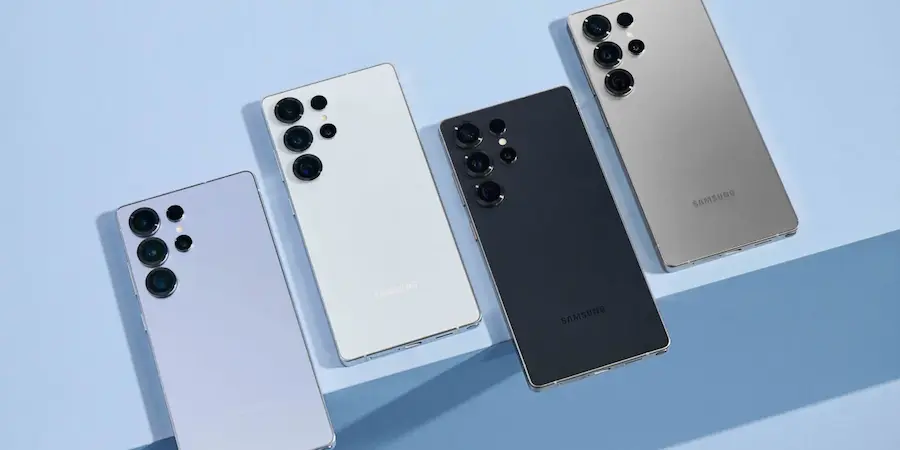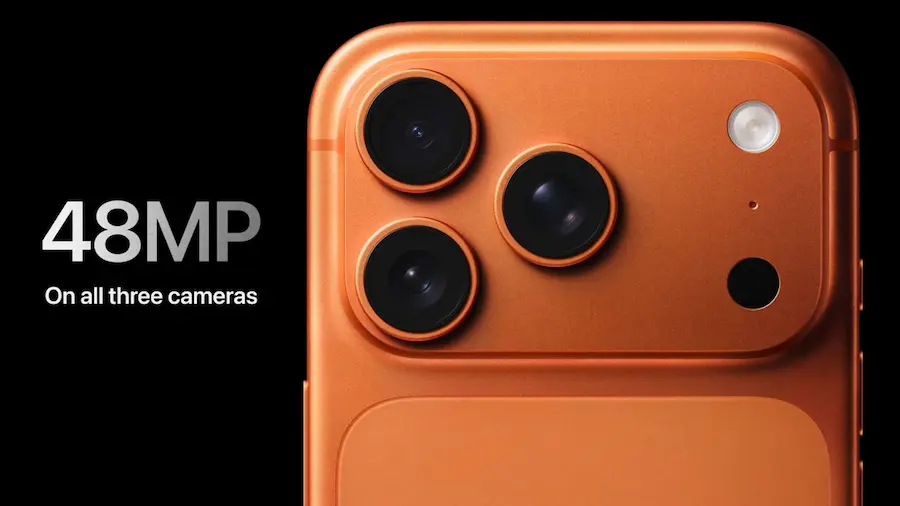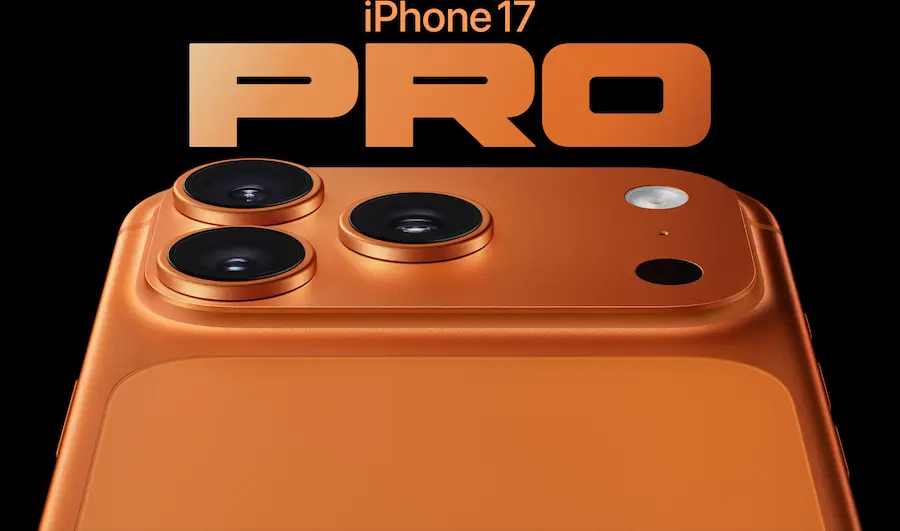Yesterday the new iPhone 17 models were unveiled, and Apple and Samsung face off again with their giants for 2025: iPhone 17 Pro Max and Galaxy S25 Ultra arrive with huge screens, ambitious cameras and many promises in performance and battery life. Who really rules the Olympus of superphones? We’ll tell you with a tech magnifier and no fluff.
Design and display: metal, glass and next-generation anti-reflective coatings
Both go for solid constructions with flat frames and softly rounded corners, although Apple changes course and drops titanium, reverting to a classic metal frame and giving more prominence to aluminum on the back. The iPhone 17 Pro Max debuts a matte glass piece that Apple identifies as Ceramic Shield for the rear, claiming crack resistance four times greater compared to previous generations. Samsung, meanwhile, keeps its formula: matte glass rear with Gorilla Glass Victus 2 and front with Gorilla Armor 2, a combination famous for its toughness and, above all, for its excellent anti-reflective treatment.
Size leaves no doubt: 6.9 inches for both. The iPhone 17 Pro Max mounts a Super Retina XDR OLED panel with ProMotion at 1-120 Hz, and the big novelty is a 7-layer anti-reflective coating to improve visibility outdoors, an idea reminiscent of the leap we already saw in the S24 Ultra. The Galaxy S25 Ultra responds with its Dynamic AMOLED x2 at 1-120 Hz and a very accomplished anti-reflective treatment. In peak brightness, Apple takes the lead with 3,000 nits vs the Galaxy’s 2,600 nits.
On the front, no surprise: Apple’s Dynamic Island remains the same whether you like it or not because it houses the Face ID sensors, which remain a benchmark in facial unlocking. Samsung opts for a tiny hole for the camera and an ultrasonic under-display fingerprint reader, fast and reliable. A curious detail: the iPhone now seems more ‘buttoned’ with a power button, volume, the new Camera Control and the programmable Action Button; the S25 Ultra stays sober with power and volume. In dimensions, the iPhone is a bit thicker but even lighter (206 g vs 218 g). Colors? Apple sticks to Silver, Deep Blue and Cosmic Orange; Samsung offers a Titanium tone palette, with extra exclusive variants in its online store.

Power and software: A19 Pro vs Snapdragon 8 Elite
The eternal silicon battle heats up. The iPhone 17 Pro Max arrives with the A19 Pro made on 3 nm, while the Galaxy S25 Ultra bets on the Snapdragon 8 Elite “Made for Galaxy”, also at 3 nm. On paper, Apple’s chip should improve generation after generation, but the key move is in cooling: Apple boasts a new vapor chamber to keep heat and thermal throttling in check. It will be interesting to see how both perform in sustained tests and whether that vapor chamber makes real differences.
In memory, Samsung keeps 12 GB in the Ultra, a usual figure in the Android high-end. On the iPhone, all signs point to finally seeing 12 GB, although Apple hasn’t confirmed it; we’ll have to wait for teardowns and third-party tests. For storage, the iPhone repeats the 256/512 GB, 1 TB and a new 2 TB top option, while the S25 Ultra stays at 256/512 GB and 1 TB.
On software, iOS 18 arrives with a “Liquid Glass” aesthetic that applies transparencies, animations and glassy effects throughout the system, with a Clear Look mode to maximize that translucent look. There’s also a dynamic wallpaper, animated Music covers and a cleaner, more direct Camera app with swipe gestures. In productivity, spam filtering and call screening land, in addition to Live Translate in real time during calls, a direct nod to features Samsung has been pushing for a while. Maps and Photos also improve with more accessible organization.
The Galaxy S25 Ultra comes with One UI 7 on Android 15 and the full Galaxy AI suite supported by Google Gemini: text, voice and call summaries, image generation and cross-app actions, among others. Best is the promised support: 7 years of updates, looking ahead to One UI 8 and Android 16 and beyond. Apple usually guarantees about 5 years, although industry context is pushing that figure up.
Cameras, battery life and charging: smart zoom vs multi-zoom arsenal
In photography, both go all out. The iPhone 17 Pro Max combines three 48 MP sensors (main, ultra wide and 4x telephoto) and relies on its “Fusion” system, which uses sensor crops to offer “lossless” zoom levels up to 8x with 12 MP photos, plus stretching digital zoom up to 40x. The Galaxy S25 Ultra bets on hefty numbers: 200 MP on the main, 50 MP on the ultra, a 3x of 10 MP and a 5x of 50 MP, a versatile setup for portraits and long distances that has in fact dominated specialized rankings and only narrowly lost to the Xiaomi 15 Ultra in very specific scenarios.

On the front, Apple bumps to 18 MP with an almost square-format sensor to play with different framings and stabilization in video calls; you can even keep Center Stage on so the framing follows you or opens if someone else joins. Samsung keeps 12 MP in the selfie, with solid results in resolution and detail.
The battery also promises to battle. Apple doesn’t give exact figures, but everything points to a cell between 4,700 and 5,000 mAh in the iPhone 17 Pro Max and claims up to 39 hours of video playback. Charging finally speeds up: 40 W wired, with 0-50% in about 20 minutes, and 25 W wireless via MagSafe 2.0. Samsung plays it safe with 5,000 mAh, a great balance for a day and a half of moderate use, and charging at 45 W wired plus 15 W wireless. If you hate watching the percentage drop, both will give you margin, but Samsung’s cautious approach after the past “Note” incident continues to mark its strategy.
In summary, we are facing two very evenly matched flagships: Apple refines design, display and thermals while keeping its ecosystem and facial biometrics as differential weapons; Samsung responds with a superb anti-reflective panel, a more versatile zoom and a Galaxy AI and long-term update package that’s hard to ignore. Is your priority the “all-integrated” iOS experience or do you prefer the flexible power and long haul of One UI with Galaxy AI? Whatever your choice, the 2025 duel arrives as tight as a CPU benchmark where both hit the same FPS.

